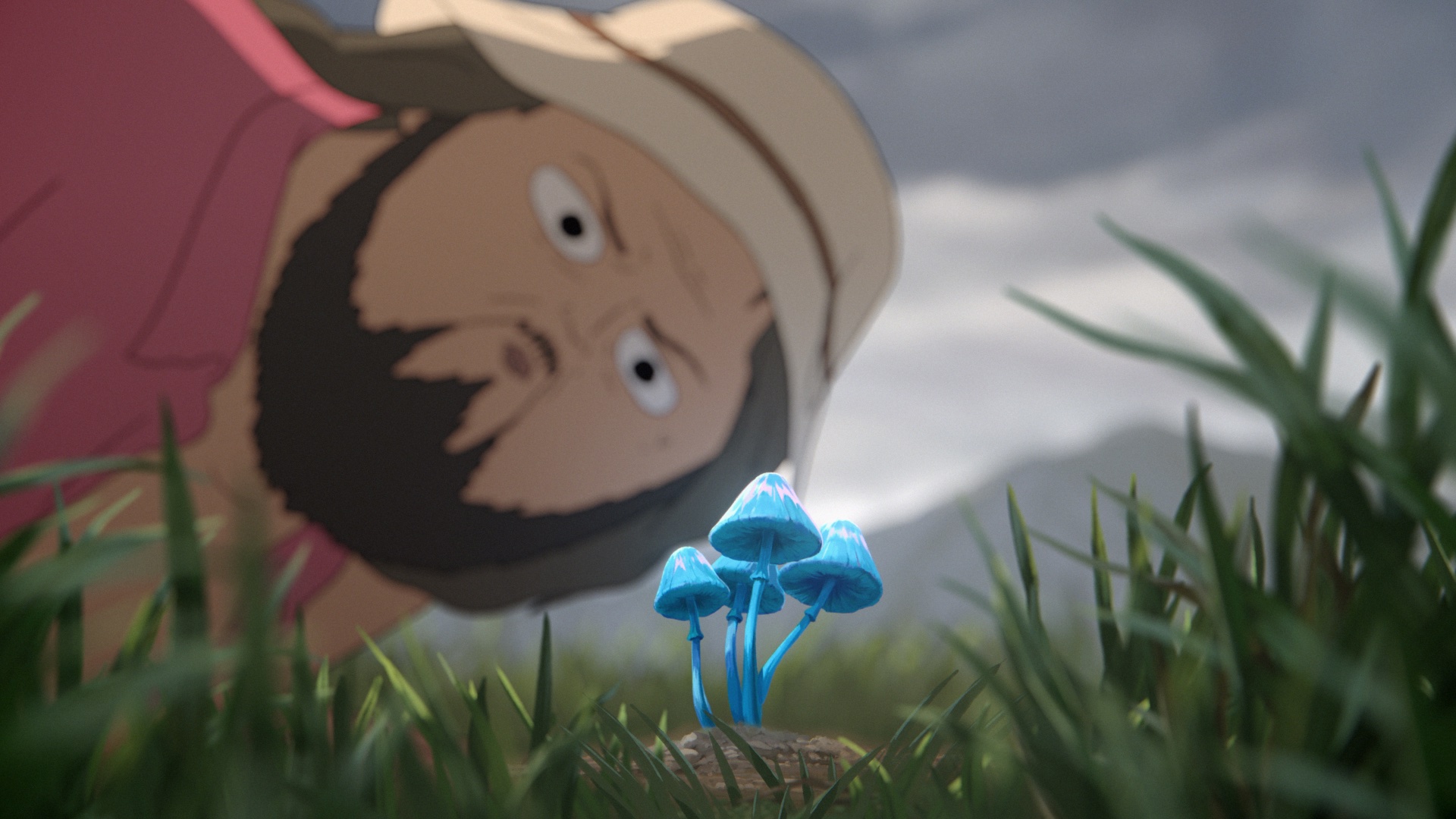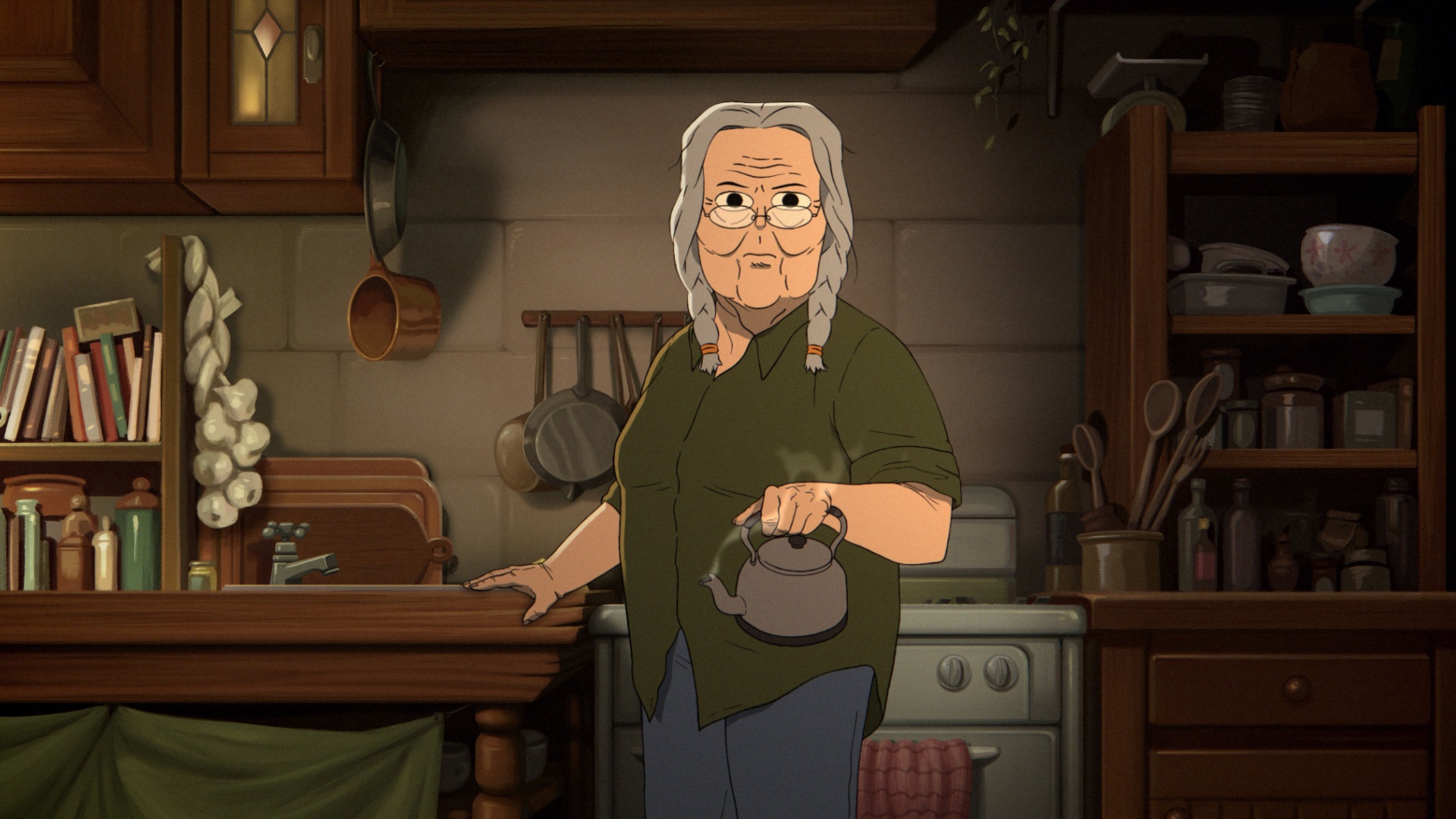‘Common Side Effects’ And The Race To Save Invisible Fungi
A “mycology thriller” imagines a hidden healing mushroom. In real life, scientists are searching far and wide to map the world’s unseen fungi.
This is an article from our newsletter “Science Goes To The Movies.” To get a story about the science of popular movies and TV in your inbox every month, subscribe here.
The new animated Adult Swim series “Common Side Effects” is a mycology thriller—a fictional story about a rogue mushroom researcher who finds a ‘shroom that can heal any injury or disease. As powerful people become aware that this specimen could change the world, they try to end its existence.
The series shows serious love for botany, weaving together stories of characters who are deeply curious about plants and fungi, and the human factors that affect them both. “ It’s hard not to be interested in mushrooms,” Steve Hely, one of the creators of the show, told Science Friday. “The more you learn about them, the more interesting they become.”
While there is no magical all-healing mushroom in the real world (that we know of), mycologists are scouring the globe for a curious type of hidden fungi that needs protection.

“Ninety percent of plants depend on mycorrhizal fungi,” says Dr. Adriana Corrales, a Colombia-based mycologist who researches fungi diversity at the Society for the Protection of Underground Networks (SPUN). “You cannot think about a plant without thinking about [mycorrhizae].”
Mycorrhizal fungi form networks of microscopic filaments that surround plant roots and help them access nutrients underground, allowing life to thrive in the world above. They also redistribute nutrients to areas with lower-quality soil, meaning they can physically move elements like phosphorus to plants that need it.
These fungi help keep forests and crops healthy, but studying them is challenging, in part because many important species aren’t visible to the naked eye. To find them, researchers dig up cores of soil and analyze fungal DNA inside them. Corrales has trekked the Atacama desert in Chile and the Ecuadorian Amazon in search of mycorrhizal fungi. Even in very seemingly barren, desert areas, their DNA can be abundant, shocking researchers, she says.
Researchers are just scratching the surface of where these invisible fungi are and what ecologically valuable jobs they do—one 2023 report estimates that over 90% of all fungi are still unknown to science.
“We have to really start monitoring the changes in the [mycorrhizal] communities to understand what is happening, what is causing it, and how we can fix it,” Corrales says. “We are doing this under huge pressure because things are changing really rapidly, degrading. We need to act as quickly as possible.”
One of SPUN’s main goals is to map mycorrhizal diversity to understand what species exist in the face of rapid ecological change.
The plan? To sample every square kilometer of soil on Earth.

Biodiversity hotspots help determine where to send resources for conservation, but fungi have historically been underrepresented in this calculation. Corrales says that making an accurate map of mycorrhizal biodiversity will provide evidence SPUN can use to advocate for the protection of the fungi and their surroundings from threats like deforestation and illegal mining.
To develop such a map, SPUN is supporting a network of mycorrhizal researchers who provide DNA sequencing data from their own fieldwork in different areas. Corrales, for example, gathers fungal DNA samples from around black oak trees. SPUN is using machine learning to analyze the data from hundreds of different studies and develop a large digital map that helps predict global mycorrhizal diversity.
The more samples, especially from places with very high and low mycorrhizal diversity, the better the algorithm. To access these places, Corrales runs SPUN’s Underground Explorers Program, which funds almost 100 mycologists across 41 countries, including areas in the global south, which Corrales says is historically underrepresented in mycology literature.
As of now, SPUN has two papers in the final stages of peer review, one identifying mycorrhizal diversity hotspots around the world and another identifying areas with high concentrations of unknown species. In Peru, where the fictional mushroom in “Common Side Effects” is found, three Underground Explorer research teams are documenting mycorrhizal fungi in the Andes and the Amazon as well as near Machu Picchu.
Fostering mutually beneficial partnerships, such as those with Indigenous groups like the Kichwa de Sarayaku people in the Ecuadorian Amazon, helps the mycologists learn about undersampled areas. And the research that comes out of these efforts may one day support policies that help protect those groups’ biodiverse land.
“Fungi, I think, teach us about symbiosis and cooperation—something that you cannot do alone,” Corrales says. “You can do it if you have the right support network.”
Yes. The series perfectly blends a far-out premise with stark realities about human damage to the environment and power struggles that hinder research and progress. It also has funny mycologist characters, each representing their own trope. If you liked “Scavenger’s Reign,” which shares a creator with “Common Side Effects,” you’ll like this.
“Common Side Effects” is airing on Adult Swim and streaming on Max.
Emma Lee Gometz is Science Friday’s Digital Producer of Engagement. They write SciFri’s “Science Goes To The Movies” series and are a journalist and illustrator based in Queens, NY.